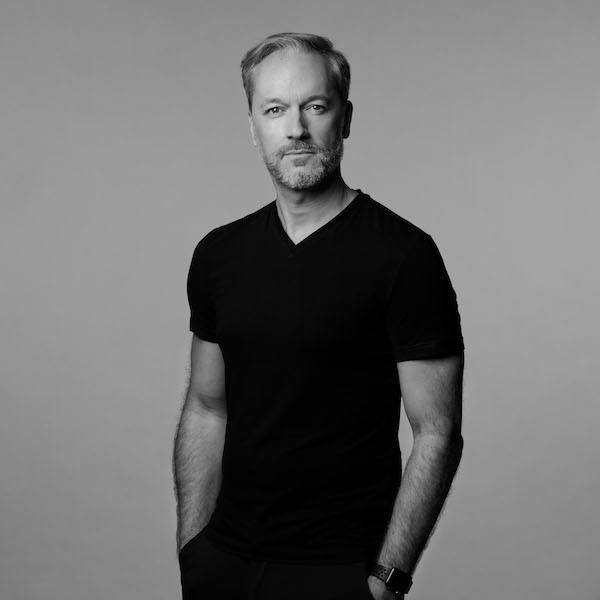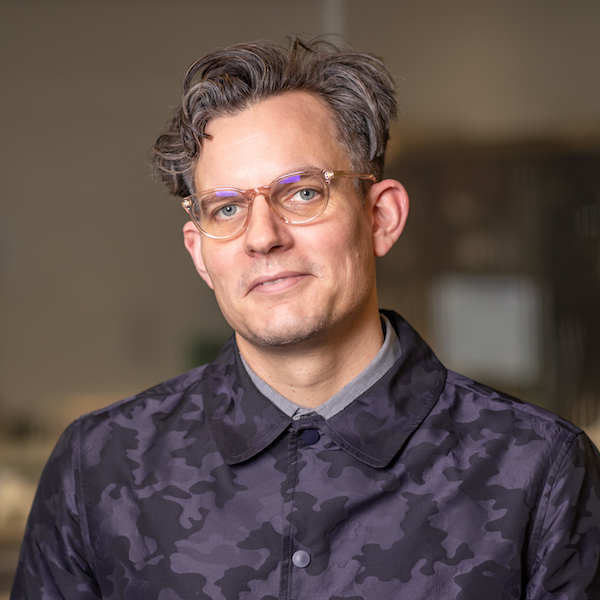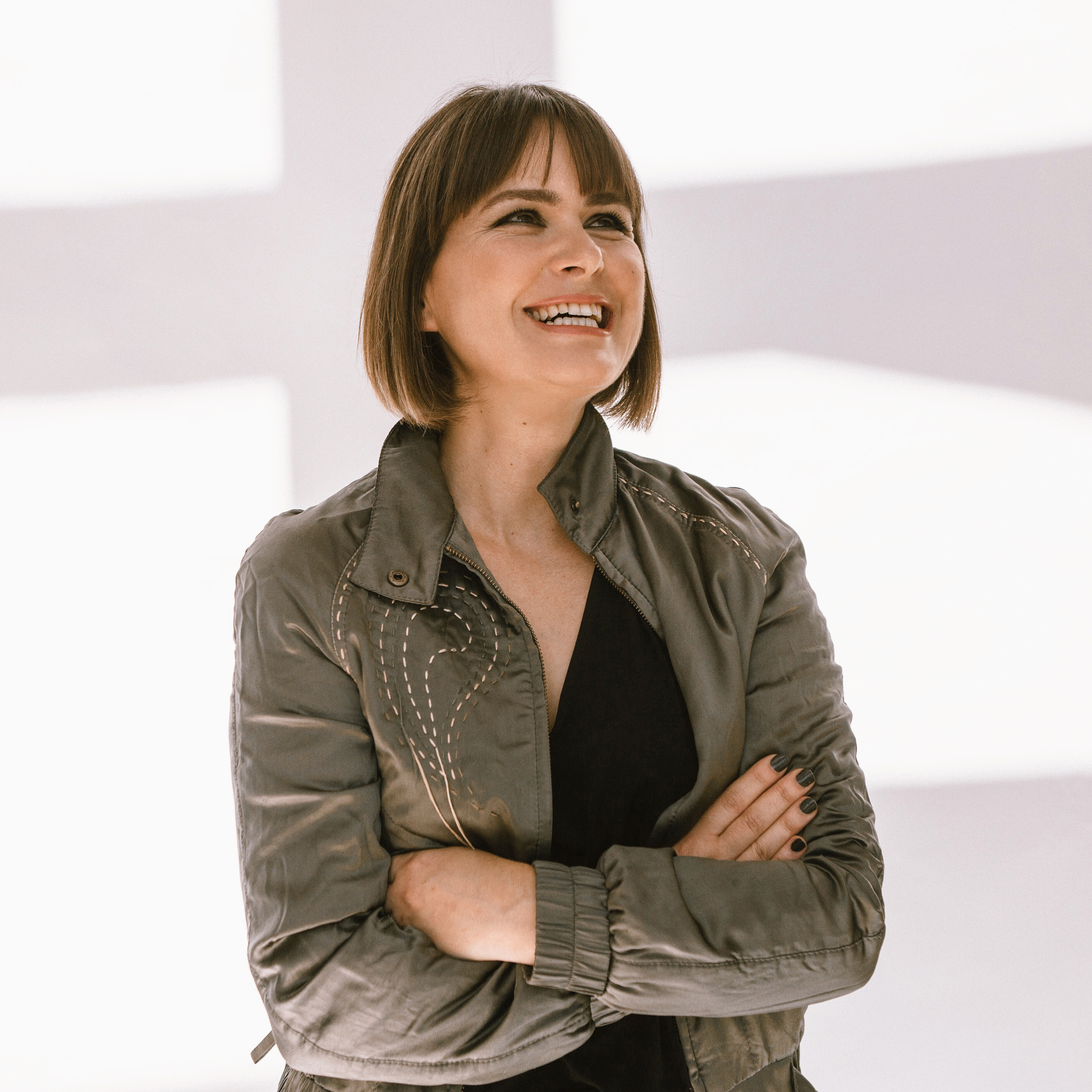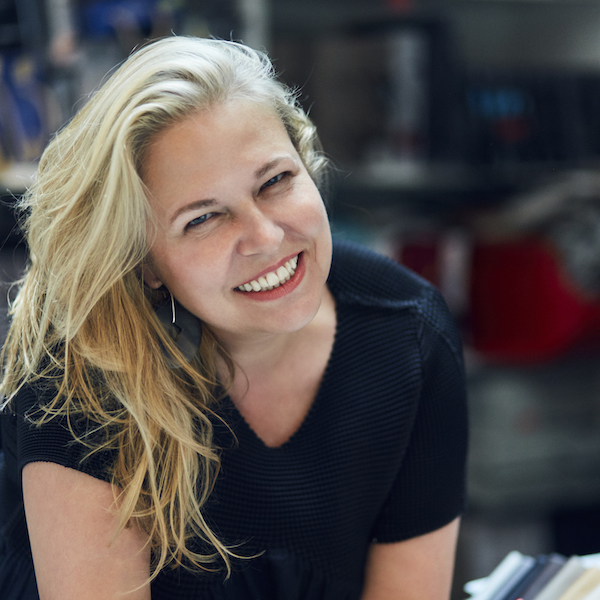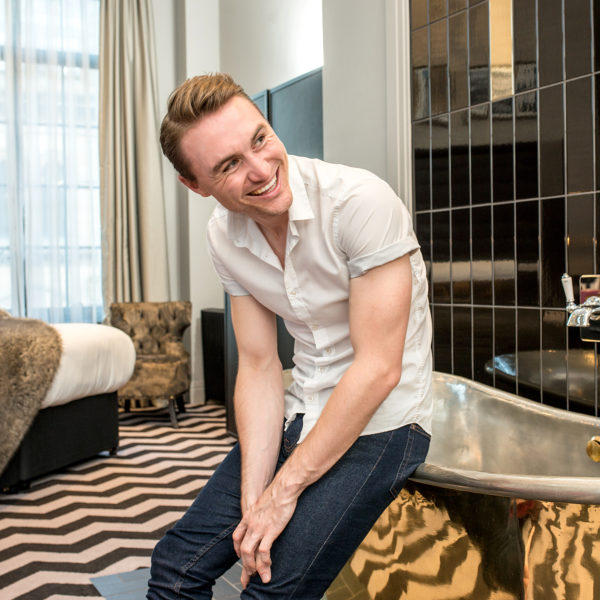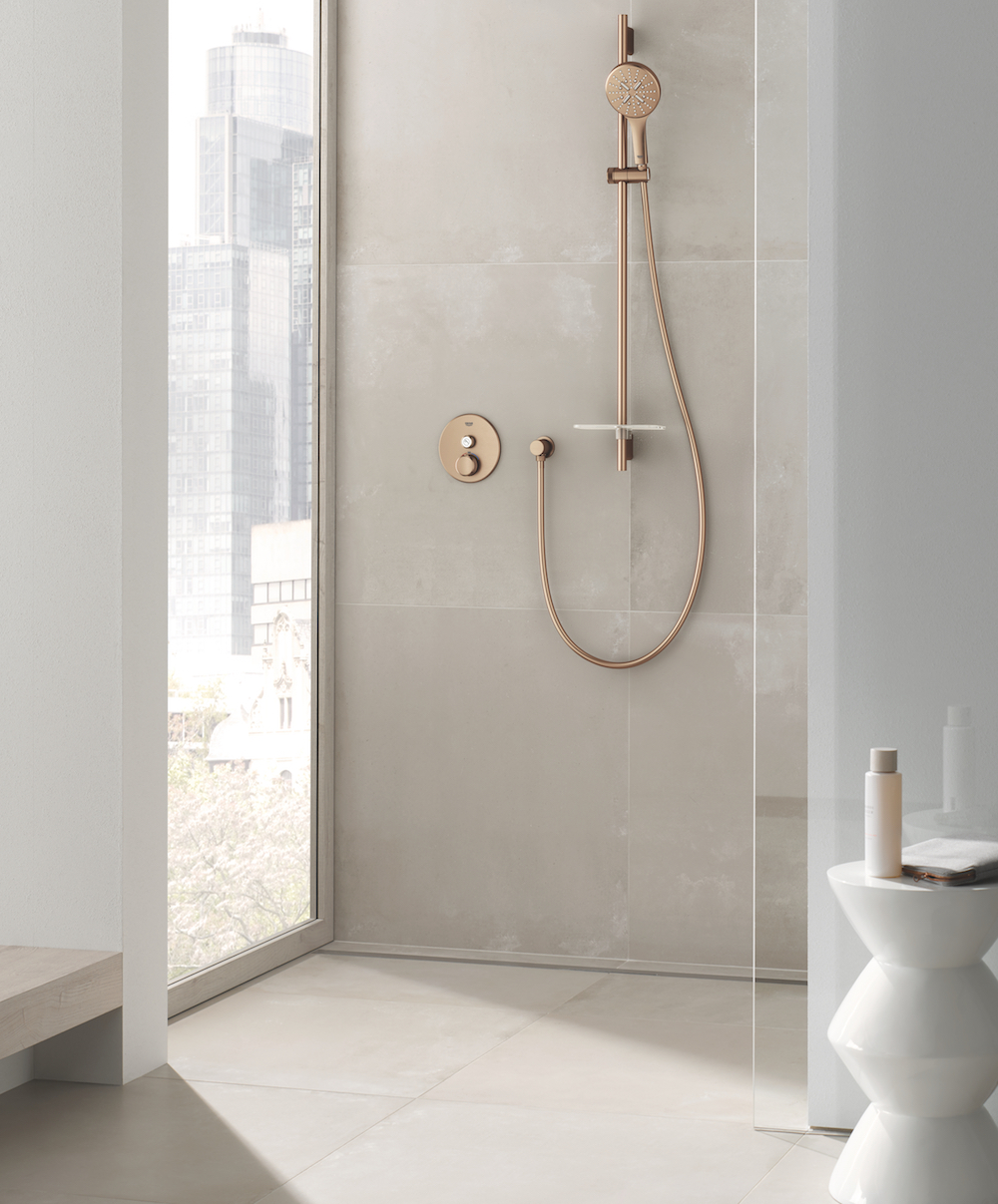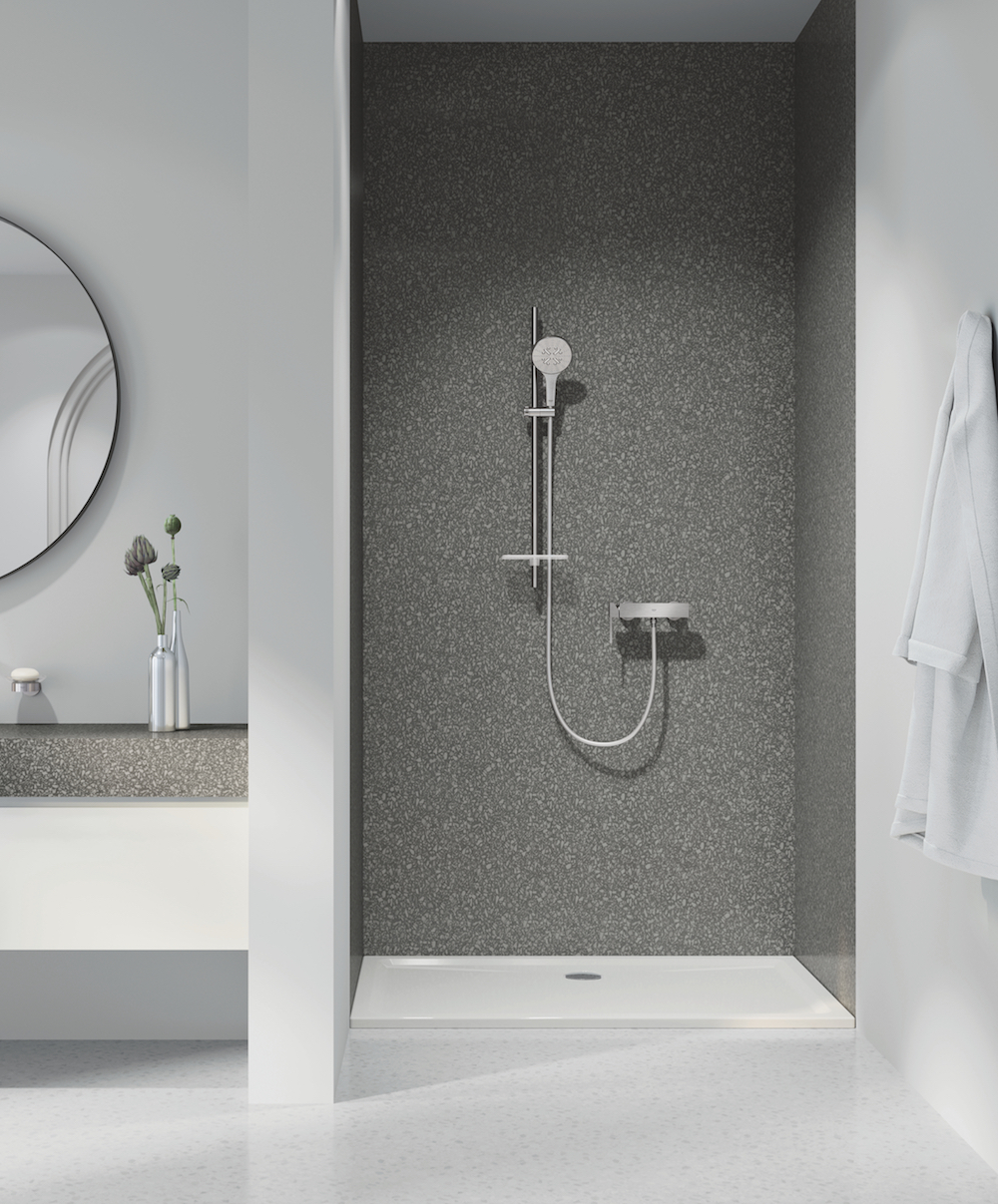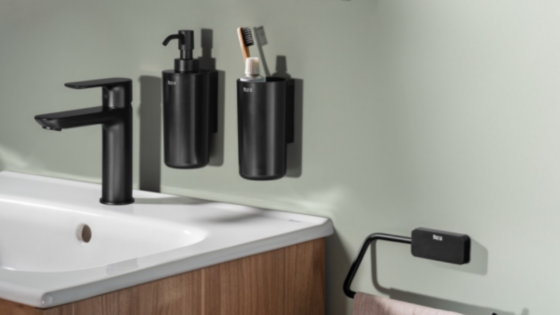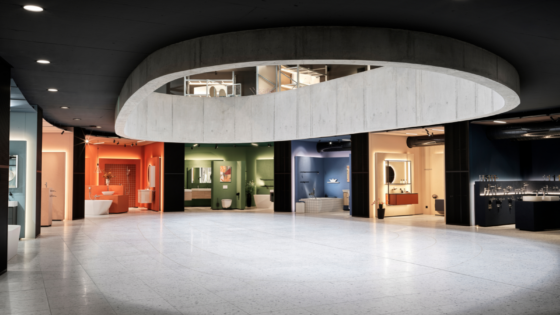For our next magic trick – AKA virtual roundtable – we’ve invited industry experts to take on the topic of stylish sustainability in wellness. Editor Hamish Kilburn leads the discussion that is sponsored by GROHE, a bathroom brand that has put sustainability at the core of each and every decision for more than 20 years…
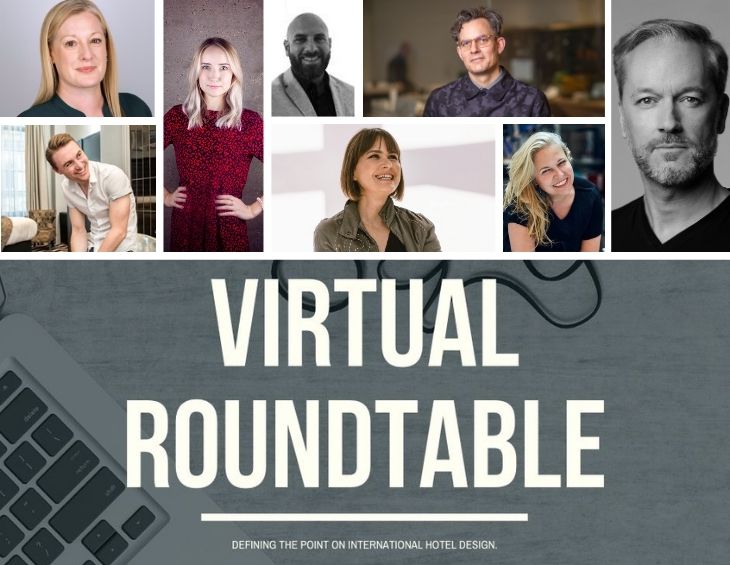
For years now, we have been scratching away at the surface of sustainability, persuading our clients to allow us to make conscious decisions to make as least impact on the environment as humanly possible when designing tomorrows hotels.
In this quest, Hotel Designs has exposed greenwashing and championed brands and designers who are challenging conventional thought processes in order to design better spaces, for the climate and the people they shelter.
One brand that is clearly and unapologetically leading the way towards a more sustainable future is GROHE. Having just been named one of the 50 sustainability & climate leaders and becoming a double winner at the German Sustainability Awards, there is no brand that is more qualified to help us put this often misunderstood topic under the editorial spotlight. And in order to make this conversation a multi-layered discussion between all segments of the hotel design community, we’ve also asked a handful of leading designers and architects to participate in this virtual roundtable, which is entitled: stylish sustainability in wellness.
Meet the panel:
- Patrick Speck, Leader, LIXIL Global Design EMENA, GROHE
- Sarah Murphy, Architect, Jestico + Whiles
- Neil Andrew, Head of Hospitality, Perkins&Will
- Constantina Tsoutsikou, Founder, Studio LOST
- Ariane Steinbeck, Managing Director, RPW Design
- Hamish Kilburn, Editor, Hotel Designs
- Emma King, Head of Design (EMEA), IHG
- Karl Lennon, Leader, Projects Channel – A&D, LIXIL EMENA
Hamish Kilburn: Patrick, before we start, why is GROHE able to hold these credentials?
Patrick Speck: Sustainability has been part of our core DNA for more than 20 years now – we have a 360-degree approach to sustainability that incorporates all parts of the process, from product design to packaging but also encompasses our suppliers, customers and our social responsibility alike.
At GROHE, we are quite fortunate to have sustainability as one of our brand pillars, and it was already there when I joined the brand more than 16 years ago. Our ‘GROHE goes ZERO’ initiative allowed us to became the first leading sanitary ware brand to achieve carbon-neutral production last April. This was a huge milestone for us. We also have a big fight against single-use plastics. Unnecessary packaging within packaging is not acceptable.
This DNA, especially with our purposefully driven younger generation who join our team, allows us to generate new and innovative ideas. We are always considering how we can be more sustainable.
Hamish Kilburn: In the last five – 10 years, what have you learned about manufacturing energy-saving products that reduce water consumption?
PS: One thing that we learned is that we cannot compromise performance when becoming more sustainable. This puts big pressure on how we design and engineer our products. We need to ensure that everything we do is going to save water and at the same time perform exceptionally well.
The other learning, I would say, is giving the consumer options. Take hand showers for example. We heard that, while there was a desire for energy-saving products, there were also consumers who were demanding a product that gave them a luxurious full spray. Our EcoJoy technology fulfils this need by giving a voluminous experience whilst using up to 50 per cent less water.
Also, behind the scenes, we worked on engineering ways that would reduce water consumption without impacting the performance of the product.
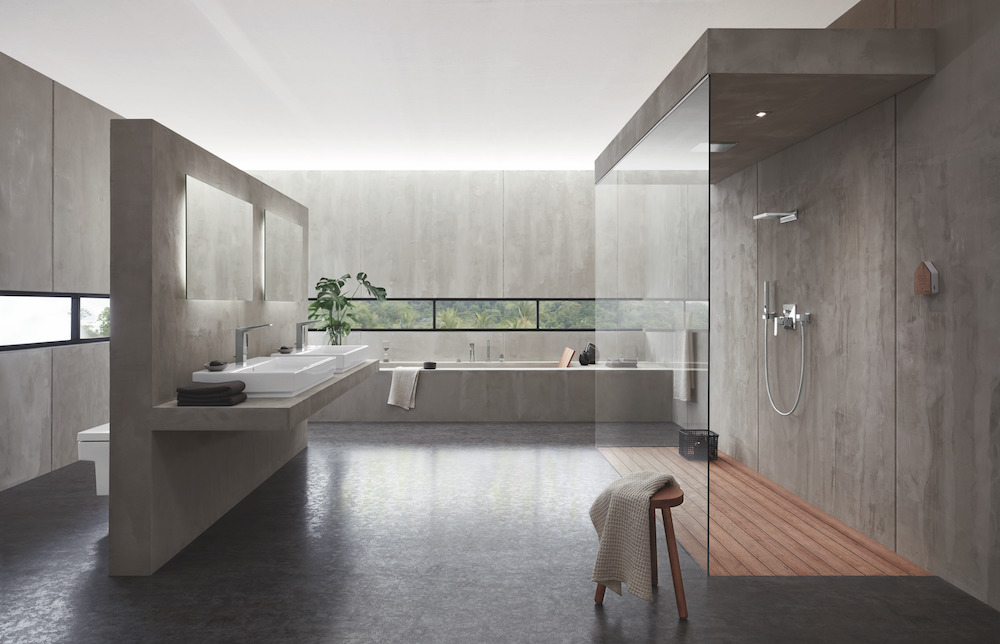
Image credit: GROHE
Karl Lennon: When it comes to projects its very important that we support architects and designers with sustainable solutions. When recommending a product for a project we try, where possible, to provide solutions that are inherently water efficient so that it doesn’t always have to be an additional consideration for the designer. We know that a lot of the major hotel brands have these requirements in their brand standards and so we consider this very early in the specification process.
HK: This pre-existing idea that sustainable products don’t perform as well is really interesting. Is this still the case today?
Ariane Steinbeck: Not only did it impact the quality but it also had a price tag attached to it. So, in the beginning anything eco was more expensive. And then the brands, such as GROHE with the air infusion built-in, started to, as Karl said, standardise sustainability within products. You know their products are good and you don’t have to think about it because the quality is there. As specifiers, that’s what we are looking for!
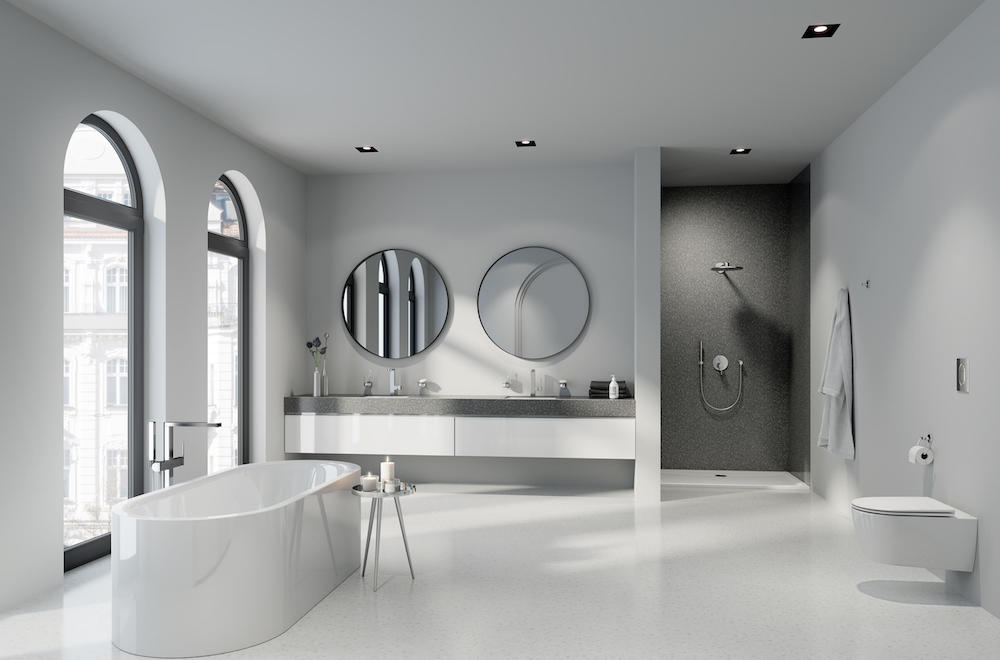
Image credit: GROHE
Emma King: The sustainable aspects should not impact the guest experience, so there has to be a balance.
HK: Despite brands using technology to ensure that quality is not sacrificed in eco-products, I get the feeling it’s still a challenge pitching these options to clients. What are your thoughts on this?
Sarah Murphy: That’s definitely an issue. In our design meetings, it’s always challenging to pitch a product that has the qualities we are looking for but is more expensive. However, it comes from the top down. If a brand is inherently sustainable, then we find ourselves as designers not really having to pitch too hard because the product, and the brand’s credentials speak volumes.
Equally, consumers are so aware and are seeking sustainable options. We are finding that because of this, it becomes an upsell to pitch a sustainable product that performs just as well.
Neil Andrew: I’m quite surprised that it’s not more standard already to add the air into the water. To echo what Sarah was saying, the next generation of consumers are going to be more aware of sustainable products. Eventually, I would like to think this would become the norm. Ultimately, if this was standardised then the cost would come right down.
SM: We sometimes have CPD sessions, where if people talk about sustainability it’s all just talk. But with GROHE you can really see that sustainability runs through the brand’s DNA.
HK: Constantina, you once told me that you have yet to receive a brief where the client wants a fully sustainable hotel. Has that changed?
Constantina Tsoutsikou: I’m glad to say that is no longer the case. We are working now on a project that has a strong focus for sustainability. What has changed in recent years is that when we are specifying bathroom products we will ask if there is a water-saving element because we might choose something from an aesthetic perspective but we do want to also ensure that it is eco-friendly.
“I would say that you can tell if a company is passionate about sustainability on the packaging.” – Constantina Tsoutikou, Founder, Studio LOST
The demand for sustainable options has created a new requirement from our side. I have to say that clients, especially in the boutique scene, do want us to specify products that will save them money in the long term. I’m glad that we are all becoming a lot more aware, and that isn’t just when looking at a product and its performance, but also when considering how it is packaged. I would say that you can tell if a company is passionate about sustainability on the packaging.
PS: The amount of waste you generate from one delivery is crazy. I would say we have reacted to this with common sense and a distinct awareness.
NA: There is a perception of luxury through packaging – like a product wrapped in velvet, for example – and I am sure a lot of people still buy into that. What were designers’ reactions to when you changed packaging at GROHE?
KL: It’s an interesting point. We had a radical strategy change on how we supply customers. To be honest, every customer has a different requirement as to what they want from us. For pod and prefabricated projects, where exactly the same number of fittings and products need to be supplied in each room, we have explored bulk delivery. Rather than putting a box in a box, we can reduce packaging by supplying all of the same products in one box. In all honestly, there is really strong argument to introduce this in other projects.
AS: When the general contractor needs to certify his/her waste, there’s definitely a call for different types of packaging.
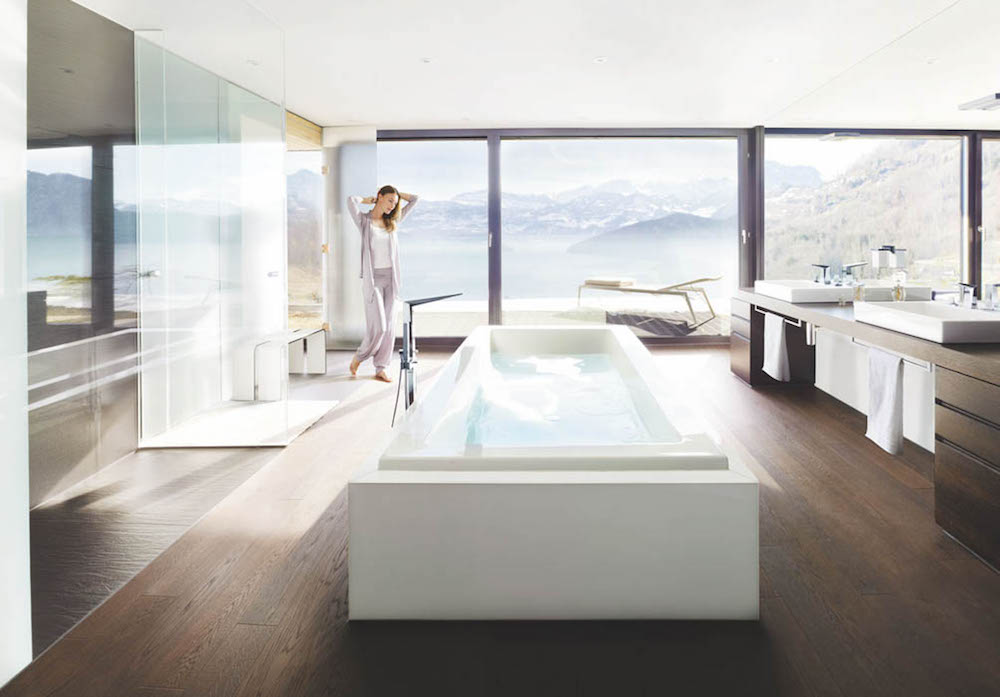
Image credit: GROHE
HK: Does a sustainable bathroom product limit your creative options?
CT: There are so many options, which are increasing by the day that we probably wouldn’t have a few years ago. I don’t think having sustainability in the background or forefront limits your creative options.
SM: When we ask brands to come in for CPDs, we do ask for them to hone in quite specifically on sustainability just so that we can take something away to go to the client with.
Since you’re here, Hotel Designs is hosting GROHE’s latest CPD module on hygiene on February 9. Click here to participate.
SM: Also, our past projects, like for example Zuri Zanzibar which was the first hotel globally to be awarded EarthCheck’s Gold certification, really help clients see what’s achievable. Okay, that was a very ambitious project, but when broken down everyone can learn from sustainable design and initiatives.
“Having a sustainability mind set certainly directs you.” – Neil Andrew, Director of Hospitality, Perkin&Wills.
NA: I wouldn’t say limit, but having a sustainability mind set certainly directs you. Take plating, for example, like gold and copper, when you come to recycle it becomes more difficult rather than if it was a solid brass or brushed stainless steel. On some of our projects, we are trying to steer clients in that direction. The one thing about plating and powder coating is that with more intense cleaning that the coating will wear off. In terms of shape and form, perhaps not but finishing there is a consideration there.
Also, I would like to see a more sustainable way of plating when it comes to disassembly.
KL: Our PVD quality finishing is more resilient and scratch resident than your standard chrome finish. Therefore, the longevity of the product is much higher. And of course, like you say, there are different processes. How the product is broken down is an interesting point that we can certainly look into.
PS: The way we coat and plate or products is always with longevity in mind which is also very relevant in terms of their positive sustainability impact. We do believe that we are ahead of the curve, and we are constantly looking to see which way the industry is going to establish more innovate methods in this area of product design that ultimately creates new possibilities for bathroom design.
HK: What major pitfalls should designers avoid when trying to implement sustainable design in wellness areas?
NA: My approach to design is to present a solution. I’m of the more minimalist school of thought. The most sustainable interior space is not to have any finishes whatsoever. Using too many finishes and interiors looking cluttered is a pitfall to avoid.
SM: We have had quite a few issues with powder-coated black finish because we have learned that it doesn’t last very long. This is solely down to how many times it is used and how it is used.
“There’s so much more to sustainability, it’s also about longevity and reliability.” – Ariane Steinbeck, Managing Director, RPW Design.
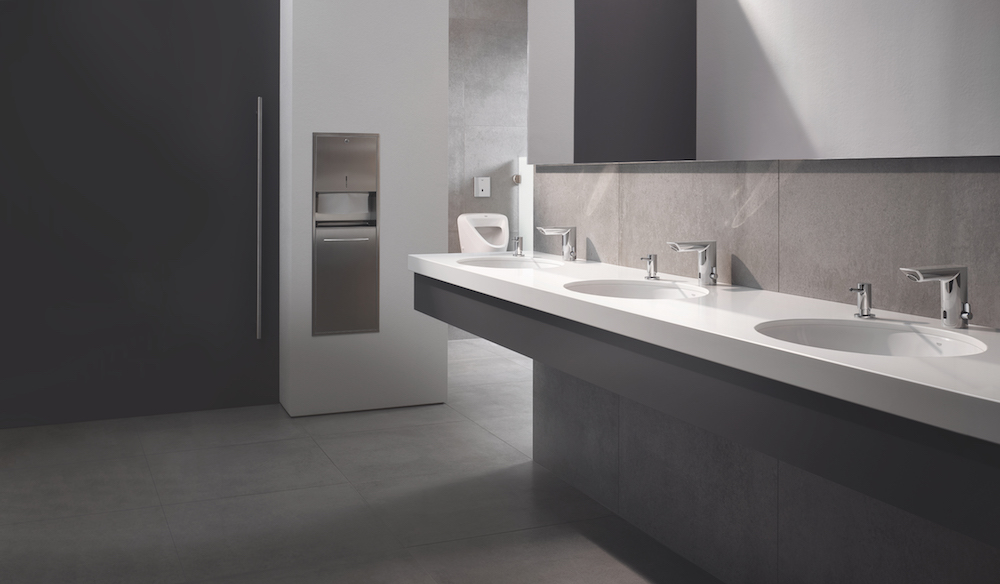
Image credit: GROHE
HK: Hygiene is no-doubt an integral part of design. How will new demands born from the pandemic impact sustainability?
CT: Usually, in public areas of hotels we will have touchless taps, but not so much in the guestroom until now but it could go that way.
AS: I’m always a bit hesitant with touchless taps. I always have to think about what happens to the project once we leave. There is nothing more frustrating than to specify a product that has a tendency to malfunction. Whenever we specify something we are making a commitment to our client. For us to be able to rely on a brand makes the specification much easier. There’s so much more to sustainability, it’s also about longevity and reliability.
NA: These conversations have certainly been amplified recently. We now get asked more about hygiene and the cleaning down of rooms a lot much more than the sustainability angle. I really like the taps that are operated through a foot pedal – not specifically in luxury hotels but it’s another option.
EK: Hygiene does not impact sustainable bathroom design unless the products can only be cleaned with environmentally harmful substances. This situation we are in at the moment might be a drive for eco-friendly cleaning products and bathroom elements being designed so they can be cleaned properly with these.
KL: When hygiene is mentioned, everyone’s first thought is ‘touchless’, but it is also just as much about how that product is looked after. At the design stage an important consideration is that the products we make are easy to maintain. In addition to this, whether it be a standard chrome finish or even our ceramics, most products will have intrinsic antimicrobial qualities that do not promote and can even destroy bad bacteria growth. For instance, with our Sensia Toilet we even have a technology called Plasmacluster. It works by releasing positive and negative ions, which make the bacteria harmless upon contact. So, there are more elements than just touchless that we are really trying to communicate at the moment.
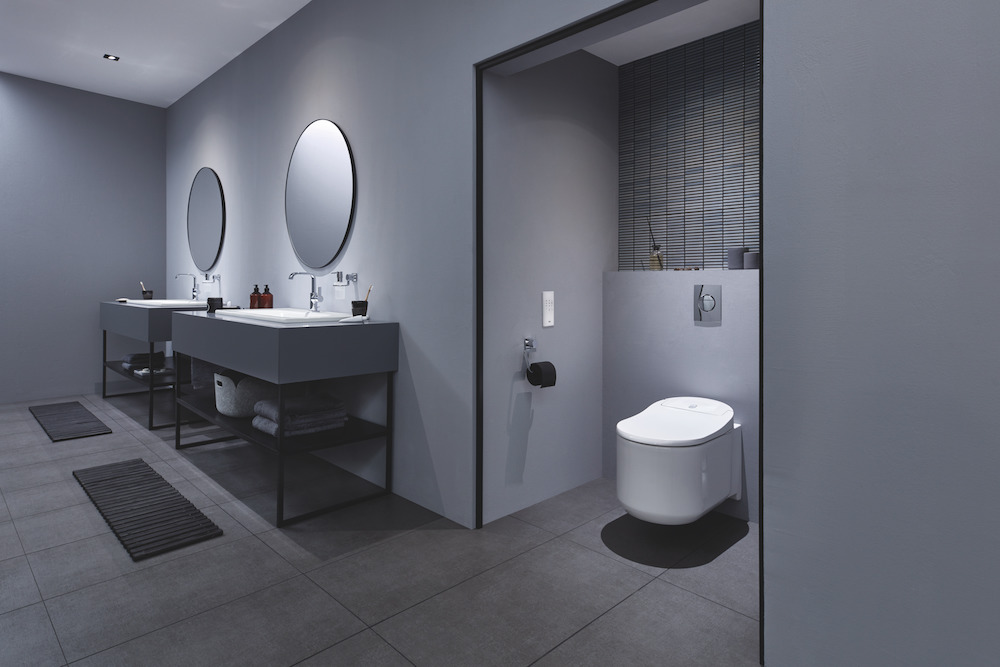
Image credit: GROHE
HK: Do sustainable initiatives suffer in Value Engineering processes?
AS: The dreaded word ‘Value Engineering’. It’s hard to say to be honest. If somebody wants to save money, you can always find something cheaper but then it’s up to the client in order to maintain those products.
CT: Whatever project, there is always an element of reviewing cost. More often than not it is a finish that is taken out in the VE process. These things are usually pre-set before we have come on board and it’s always allocated the same. Perhaps this might change in the future as other factors, such as sustainability, become more of a focus.
NA: I always think it’s wise to keep close to the cost consultant. I will look at the large number and see where the money is being spent. However, there are unavoidable budget cuts.
- Image credit: GROHE
- Image credit: GROHE
HK: What more can we do to operate in a more sustainable wellness arena?
PS: From the product side, in our research and development we are looking at ways to further improve longevity and relevance. Which means technology for technology’s sake is no longer appropriate. Instead we are looking for project or user-centric. For this, our in-house design team is integral.
Also, the technology we are using, such as our 3D printing techniques, is allowing us to locally be more experiential and proactive in our quest to design and manufacture quality products for the hospitality industry. And at the same time, it’s helping the environment: In comparison to a brass cast body, you use less energy and only as much material as you need.
GROHE is one of our Recommended Suppliers and regularly features in our Supplier News section of the website. If you are interested in becoming one of our recommended suppliers, please email Katy Phillips.
Since you’re here…
More than 40,000 readers per month enjoy the content we publish on Hotel Designs. Our mission is to define the point on international hotel design, and we are doing that by serving relevant news stories and engaging features. To keep up to date on the hottest stories that are emerging, you can sign up to the newsletter, which is completely free of charge. As well as receiving a weekly round-up of the top stories, you will also access our bi-monthly HD Edit –staying ahead of the curve has never been so easy!
Click here to sign up to our newsletter.

